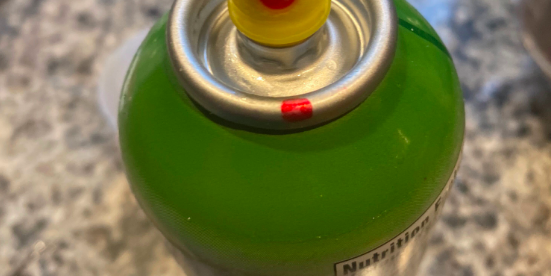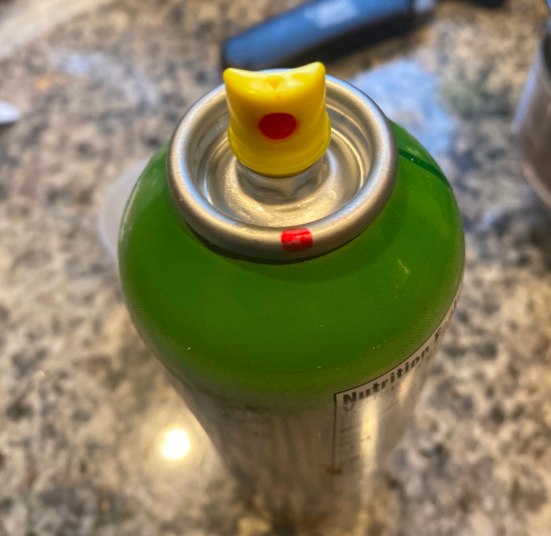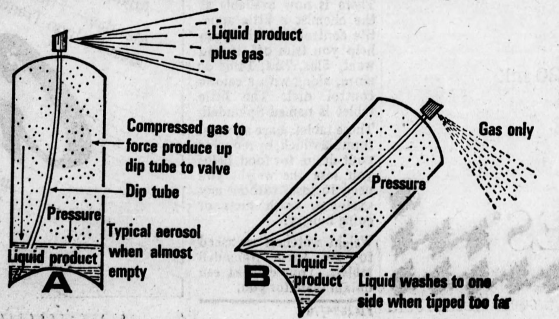The Dot in Your Kitchen You’ve Probably Never Noticed

If you have a minute, go into your kitchen right and look for an aerosol can — cooking spray, oven cleaner, or the like. Take off the lid and look at the rim around the nozzle. There’s a good chance you’ll see a spot that you’ve probably never noticed before. But if not, here’s an example below.

In general, random markings on consumer packaged goods aren’t so random — quality control efforts are just too good to allow for such mistakes on a regular basis. And the mark above is, as you’d expect given that I’m writing about it, not an exception to the rule. It’s there to help.
If you’ve ever used an aerosol can, you probably have had a frustrating experience as it approaches being empty. Shake the can and you can hear that little bit of compressed liquid that’s left, but when you push the nozzle, all that comes out is air. Try as you might, you can’t quite get the actual product to spray out.
To know why — and to know how that dot helps — we need to take a look at how aerosol cans work. Here’s a clipping from the October 30, 1977 issue of the Sydney Morning-Herald, below:

Let’s deal with diagram A first (because A comes before B, yeah?). You may notice two things which aren’t obvious. First, there’s a “dip tube” which brings the liquid up to the nozzle. (The “liquid” is actually a mix of liquid and gas, despite what the diagram shows.) The dip tube doesn’t run straight down, though; it curves toward the bottom rim of the can.
The second important feature is that the bottom of the can is concave. That’s intentional, for two reasons: it allows the contents inside to expand if need be without putting the structural integrity of the can at risk, and because — as we’ll see — it helps you get that last bit of liquid to come out the top.
Diagram B shows why — almost. If you tilt a near-empty can toward the target — say, you’re spraying a pan with cooking spray — you may be shifting the liquid product away from the dip tube. And as diagram B shows, that’s not going to work. You’re going to end up with gas only coming out the top.
But what if you had x-ray vision? You could use your superhero powers to see which way the dip tube bent, tip the can in such a way to get the liquid product to collect where the dip tube terminated, and then rotate the nozzle to spray out the remaining liquid. It’d be amazing — no more wasted cooking spray.
Alas, you probably don’t have x-ray vision, making this only a dream… until you notice that red dot. It’s not a production mistake. It’s a target. As Kathleen Riggs, a professor at Utah State University explained in a 1991 newspaper article, “by lining up the valve opening with the red dot and holding the can at a 45-degree angle, you can get the last bit of product out of the container.”
Bonus fact: PAM cooking spray is named after a person, but not after a person named Pam. It’s named for Arthur Meyerhoff, the co-founder of the company that first developed and marketed the product. “PAM” is an acronym — per the company’s website, it stands for “a Product of Arthur Meyerhoff.”
From the Archives: The Tool That’s Made to Be Broken: You may have noticed that the end of your tape measure is loose. That’s also not an accident. Here’s why.
